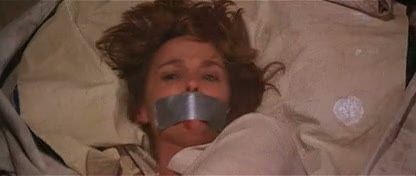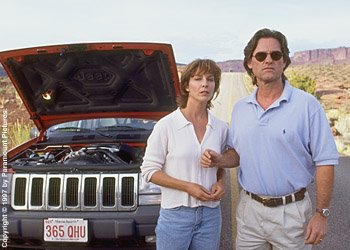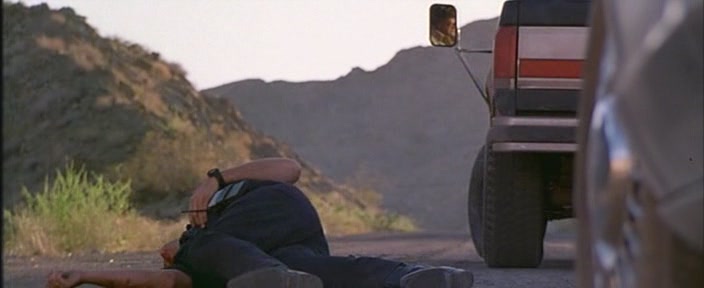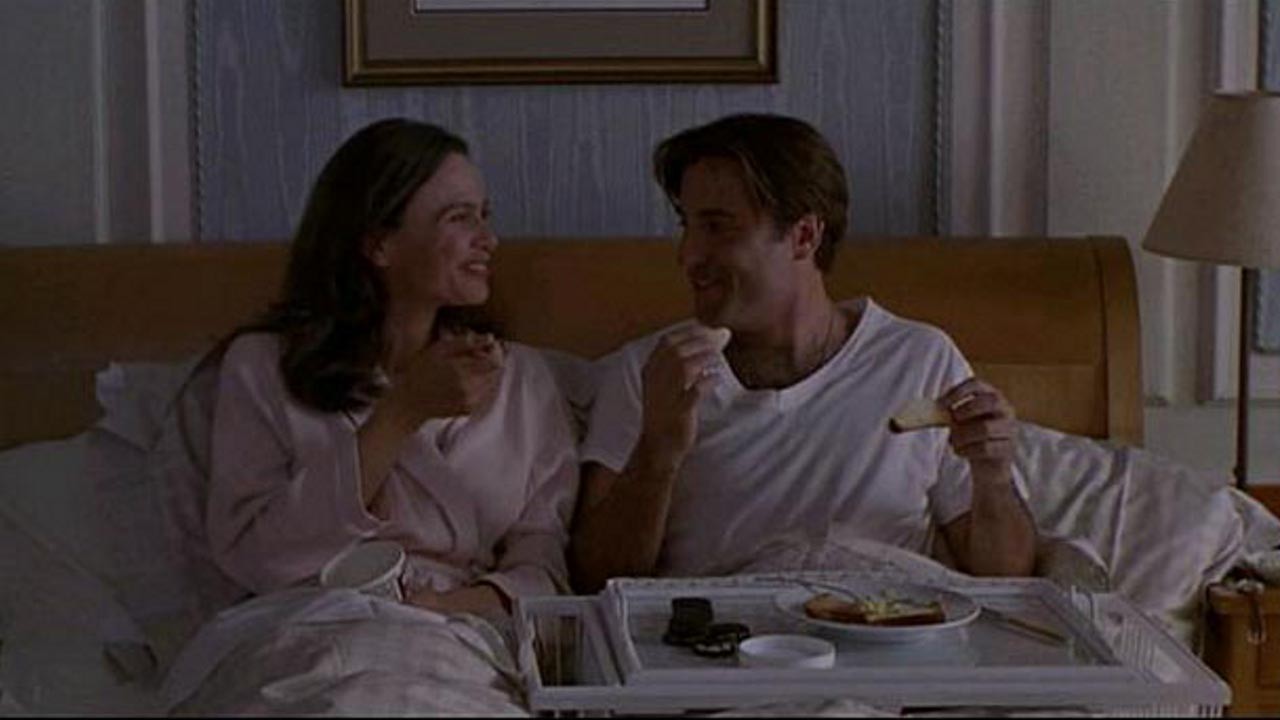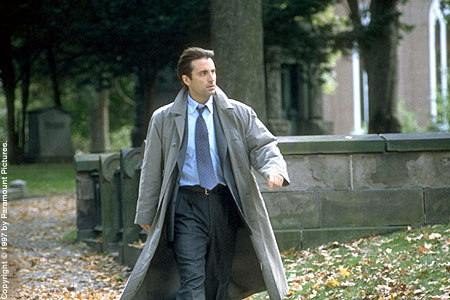From the Chicago Reader (May 16, 1997). — J.R.
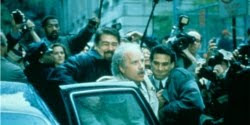
Breakdown
Rating * Has redeeming facet
Directed by Jonathan Mostow
Written by Mostow and Sam Montgomery
With Kurt Russell, J.T. Walsh, Kathleen Quinlan, M.C. Gainey, Jack Noseworthy, Rex Linn, Ritch Brinkley, and Moira Harris.
Night Falls on Manhattan
Rating *** A must see
Directed and written by Sidney Lumet
With Andy Garcia, Ian Holm, James Gandolfini, Lena Olin, Shiek Mahmud-Bey, Colm Feore, Ron Leibman, and Richard Dreyfuss.
About three-quarters of the way through Breakdown — the well-crafted theatrical-feature debut of director and cowriter Jonathan Mostow, a thriller offering more bang for your buck than almost any other recent release — I started to feel nauseous. It’s a problem I encounter during a lot of commercial American movies these days, usually for more or less the same reason; if I had to encapsulate this reason in a single phrase, I’d say it’s the way they turn people into garbage. By “people” I mean mainly fictional characters, but also filmmakers and filmgoers, because when people on-screen are treated like garbage and the movie “works” — clicks, delivers, offers more bang for our buck — the filmmakers are turning themselves and us into garbage as well.
Breakdown opens with percussion and electronic whines and tonalities behind the credits, as if to alert our nervous systems to the troubles ahead. Then we see a couple from Boston, Jeff and Amy Taylor (Kurt Russell and Kathleen Quinlan), driving through the scenic southwest in a brand-new bright red Jeep Grand Cherokee, en route to San Diego. While Amy is dozing, Jeff is momentarily distracted and almost collides with a mud-spattered truck pulling onto the highway; he wakes Amy, explains what happened, and she suggests he take a break. They pull over at a filling station where the truck also pulls up; while Amy is off buying junk food, the grizzled truck driver (M.C. Gainey) says “Nice car” to Jeff, expounds on its accessories, then remarks that Jeff, who he says has “shit for brains,” almost killed him.
A bit later, back on the highway, the Taylors’ car mysteriously breaks down. A friendly truck driver named Red Barr (J.T. Walsh) happens along and offers them a ride to a nearby diner; Amy decides to go ahead with him while Jeff stays with the car and lets the engine cool off. Shortly after they leave, Jeff finds a couple of wires disconnected, reconnects them, and heads for the diner — where Amy and Red are nowhere to be found. Eventually he discovers that she’s been kidnapped and that both truck drivers are in on the deal.
These early stretches of the movie are both economical and atmospheric: Mostow does suggestive things with the landscape, the small talk between the couple, and the sinister silences inside the diner, reminding me of the sort of things good thrillers used to do in the 40s, 50s, and 60s. But none of these details develop or mean anything later; instead, as the minimal plot unravels, we see a string of disconnected action set pieces involving Jeff and the kidnappers — all of whom turn nastier, to juice up the story, and end up dehumanized stock figures. (The fact that Red is briefly shown to have some affection for his son seems to promise some slight expansion of his character, but it never takes place.)
Each set piece is effectively executed, but the characters and their motivations become progressively dimmer and more confused. An explanation of how the kidnappers spontaneously plotted their crime is unpersuasive and cursory, their motivations (there are hints of class resentment and an earlier kidnapping) are even vaguer, and Jeff — who isn’t much of a character to begin with, though he’s better than Amy — becomes even less substantial as time goes on. In fact, plot development is so nonexistent that I’m not spoiling anything for anyone by adding that, after Jeff fails to cough up the entire sum demanded by the kidnappers and follows them back to Red’s house, the only interest remaining is whether Amy is still alive — and this being a standard Hollywood movie, we know she is.
By the time the movie concludes with its biggest action set piece yet — a classic (and classically idiotic) grudge-match car chase involving vehicles ramming each other — all the characters without exception have been reduced to the status of disposable matter: garbage. Finally, the only issue is whether Jeff gets to drop a truck on Red or Red gets to drop a truck on Jeff — and this being a standard Hollywood movie, we know the answer to that one, too.
I’m waiting for somebody to say, “Hey, it’s only a movie,” so I can reply, “Hey, this is only a movie review.” The point is that being “only” a movie nowadays frequently means turning people into garbage — something that our society is often prone to do anyway, for fun and profit; a movie merely codifies the process and throws it into more lurid relief. To my mind, “reviewing” this process means either applauding or condemning it — it doesn’t mean refusing to recognize it or measuring it exclusively in terms of nifty action sequences. Breakdown has plenty of deft action sequences, and what they add up to is nifty garbage disposal, with all of us — characters, filmmakers, viewers — ultimately spiraling down the same drain.
Why is it that treating people like something more than garbage in a crime movie — the approach taken in Night Falls on Manhattan, another Paramount release — currently seems so archaic? I’m reminded of an exchange on a recent TV talk show, when a comment that this country has more people in prison than any other nation on earth elicited the host’s glib rejoinder that this was “only” because of drugs. The implication was clear: anybody connected to drugs in any way — except for those sufficiently powerful to let others take the fall — deserves to be treated like garbage, end of discussion. And if drugs happen to be some people’s only route out of the ghetto, they should be content to stay put.
As it happens, the closest thing to a pure villain in Night Falls on Manhattan is a ghetto-bred drug pusher and killer (Shiek Mahmud-Bey) who, thanks to the work of a principled DA, gets his comeuppance in a corny but satisfying trial scene. So the only thing that writer-director Sidney Lumet does to make this seem archaic is to make the villain seem recognizably human. Starting with its romantic and inappropriate title, this is an old-fashioned melodrama, the same movie about police corruption and a cultural crisis of morality that Lumet has been making since the 70s, starting with Serpico. In this particular New York story about an honest cop, the cop is rookie Sean Casey (Andy Garcia), who becomes Manhattan’s district attorney and ultimately has to choose between loyalty to his kith and kin and loyalty to his job.
The plot is such a warhorse that Lumet — who this time wrote the script himself, adapting Robert Daley’s novel Tainted Evidence — feels he has to explain why he’s filming it in a letter to the press: “Why am I back at the same old stand: cops, corruption, culpability? Because the problem won’t go away. In fact, it’s getting worse.” So maybe the release of Night Falls on Manhattan, which was completed last year, was delayed by the reluctance of Paramount publicists to deal with a movie about the way the world works today; if only Garcia had been allowed to drop a truck or two on a corrupt cop, it might have hit the multiplexes months ago.
Lumet’s specialty as a director has always been the clamor and clamminess of New York life; his grandiloquent feeling for volatile speech patterns and explosive tempers, for ethnic nuances and crisscrossing power relations, has pumped enormous quantities of energy into such pictures as Bye Bye Braverman (1968), Serpico (1973), Dog Day Afternoon (1975), Network (1976), Prince of the City (1981), Daniel (1983), Garbo Talks (1984), and Q & A (1990), to cite only the first examples that spring to mind. (In fact, Night Falls on Manhattan is Lumet’s 40th picture, and his 29th to be shot exclusively in New York.) Thanks to this doggedness, Lumet hits paydirt with characters like an aggressive, raving, political-minded DA named Morgenstern (Ron Leibman) and an affable, laid-back cop on the beat named Joey Allegretto (James Gandolfini), two in-depth portraits that exude grit and authenticity. And the characters played by Ian Holm, Mahmud-Bey, Colm Feore, and Richard Dreyfuss aren’t far behind.
Within sequences Breakdown makes sense; it becomes a work of unmitigated nonsense only when you’re obliged to think of two or more sequences in relation to one another. By contrast, the moral focus and feeling for character in Night Falls on Manhattan give it a sturdy overall shape, but a few infelicitous details stick out like sore thumbs: Garcia’s intermittent Cuban accent when he’s supposed to be the son of an Irish cop, and a fairly perfunctory love story between him and a wealthy lawyer (Lena Olin). These blemishes are regrettable, but I can live with them. When this movie’s over, I still have people to remember, not garbage like the empty popcorn and drink containers rattling under my seat.



